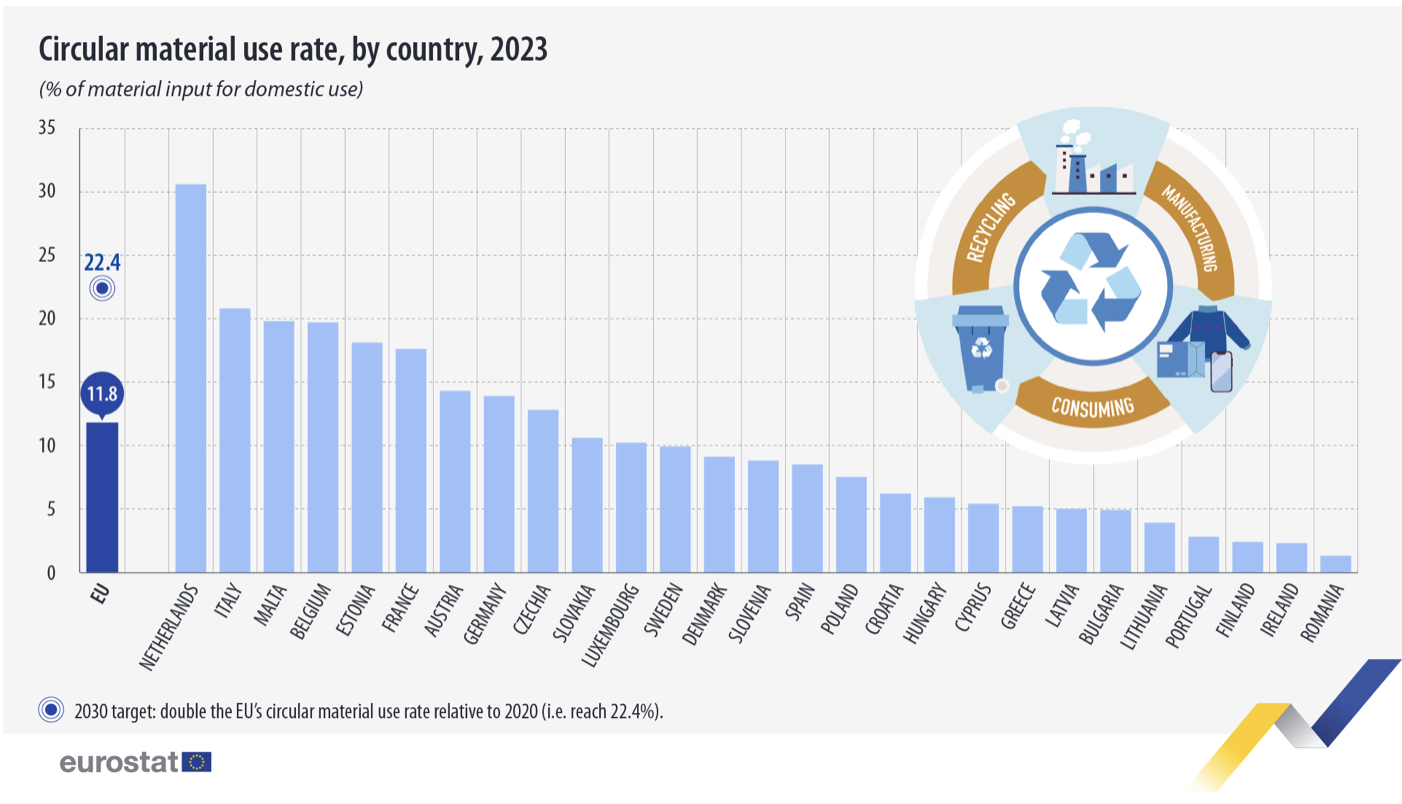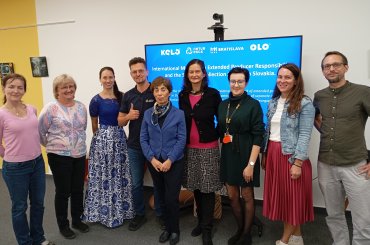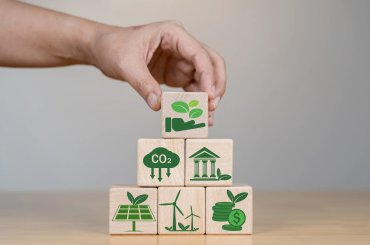Sustainable Development Goal SDG 12 – Responsible Consumption and Production requires businesses, policymakers and consumers themselves to take comprehensive measures towards sustainable practices.
Its fulfillment assumes:
- the use of advanced technological capabilities,
- efficient resource management,
- and the reduction of global waste
The Sustainable Development Goals (SDGs) are a set of 17 goals. In 169 targets, they provide a global policy framework to end all forms of poverty, combat inequality and address climate change, while ensuring that no one is left behind. These aspects are at the core of the UN 2030 Agenda for Sustainable Development.
Key indicator: material recycling rate
Eurostat monitors progress towards SDG 12 through the material circularity indicator. This measure shows what proportion of the material collected and recovered from waste is returned to the economy compared to the total material use.
- In 2008 it was at 9.1%.
- By 2023 it increased to 11.8%.
- However, since 2016 we have seen stagnation.
Goals for 2030
The European Union has set an ambitious goal of doubling the amount of materials coming from recovered waste compared to 2020 levels. This means reaching a rate of 22.4% by 2030.
Leaders and "laggards" within the EU
The differences between countries are significant:
Highest rates:
- Netherlands – 30,6%
- Italy – 20,8%
- Malta – 19,8%
Lowest rates:
- Romania – 1,3%
- Ireland – 2,3%
- Finland – 2,4%

Source: https://ec.europa.eu/
The data shows that while Europe has made progress over the past decade, the pace of increasing the circularity of materials has slowed. If the EU is to meet SDG 12 by 2030, it will need to accelerate the adoption of innovation, promote circular business models and motivate consumers to consume more responsibly.
Source: https://ec.europa.eu/


